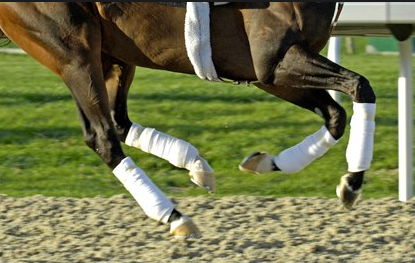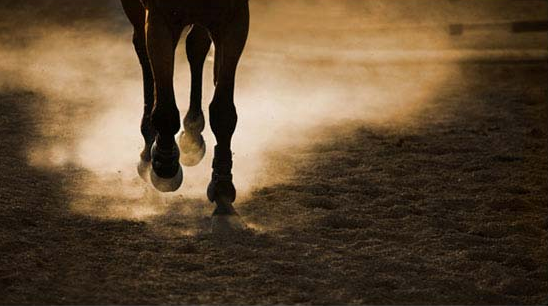By Liv Gude
Did you know that the horse’s legs are perhaps the most critical part of its body? Not only do the relatively small hooves support hundreds of pounds, but the lower legs are comprised of no muscle at all, only tendons, ligaments, and soft tissue. Pair these facts with a typical horse’s shenanigans in the paddock as well as amazing feats of athleticism under the saddle and it’s a wonder that these legs can handle it all.
As a horse owner, the most important thing you can do to help protect these precious legs is to perform a daily leg inspection and massage before and after exercise. Each leg and hoof should be looked at and massaged with both hands, top to bottom. Look for swelling, temperature differences, flinching, blood, tender areas, increased digital pulses, heat in the hooves, and anything new or different from the day before. When any changes occur, be it a minor scrape or a giant swelling or anything in between, you can be right on top of it. Quick reaction can help reduce recovery times as well as reduce veterinary bills.
Taking special care of your horses delicate appendages can come with ease if you make grooming and massaging with the Posture Prep Cross Fiber Groomer a part of your daily routine. It serves several purposes, but the main purpose is to get your horse’s body ready to go. Circulation of blood to the muscles warms and loosens the horse. The lymphatic system is responsible for draining tissues of extra fluid, filtering bacteria from the body, and maintaining the storage of powerful white blood cells. Supporting these systems in your horse creates a happy athlete. You may know of a horse or two that gets swollen hind legs if he stands around a stall for a night or two, this is usually the circulatory and lymphatic system struggling to clear those legs of fluid. Always keep in mind that any situation where there is chronic leg swelling or injury requires a Veterinarian’s final diagnosis and treatment plan.

Make sure your horse’s legs have the proper protection. Leg protection provides a barrier from your horse’s hoof or leg hitting him self, or from sharp penetrating objects or even hitting a jump. The form of protection could be polo wraps, sport boots, jumper’s boots or even standing wraps. One situation where leg wraps are a necessity is in the trailer. Most horses are fine in the trailer, it’s the getting on and off that’s the real hazard.
It’s easy for a horse to slip off the back edge or side of the ramp and remove the skin (or more) from a leg. Always use shipping boots or standing wraps in the horse trailer.
The next instance is when you are riding. Pick leg protection that works with your horse’s job and the weather. Opt for waterproof boots when you are schooling through water or going for a trail ride with river crossings.
Post exercise make sure to massage your horse’s legs again. This helps to alleviate muscle soreness and promotes healthy circulation. It is vital as the stresses of exercise and the heat retention of using leg protection can create fluid build up in the soft tissues. Your horse can also have micro tears in the tissues, which is a normal consequence of exercise, just as it is for humans.
Another good treatment for your horse’s legs after exercise is to cool them with any number therapies. Some cooling therapies include, cold hosing, while wasteful of water and time consuming, is effective. The most efficient method is using ice packs or ice boots. Poultice is another way to cool the soft tissues, although this is usually reserved for overnight treatments instead of after exercise. Cooling treatments also have the benefit of analgesia (pain reduction). For an athletic horse with a touch of arthritis, some cooling therapy on joints after a workout is welcome relief.
In some cases warming treatments may help your horse as well. Magnetic therapies, ceramic fabrics, some types of liniments and heating packs are all great ways to loosen up muscles and bring blood flow into areas.
Some horses benefit from a combination of warming and cooling treatments. Generally speaking, warming treatments help support long-term conditions and cooling treatments address acute situations. Before you begin any type of therapy on your horse, talk with your Veterinarian to discuss your horse’s medical history, his current job, and what treatments are best for him.
About the Author:
Liv Gude was a Professional Groom, starting her grooming career with Olympian Guenter Seidel. After years of grooming, Liv saw the need to bring professional Grooms and horse owners together in a supportive and educational manner. In 2011 she founded proequinegrooms.com, an online resource that provides information about grooming, employment, and horse care. She holds a Bachelor’s of Science degree in Biomedical Science from Texas A&M University, and spends her days at the barn riding her Grand Prix horse and writing for her website as well as for national magazines.

